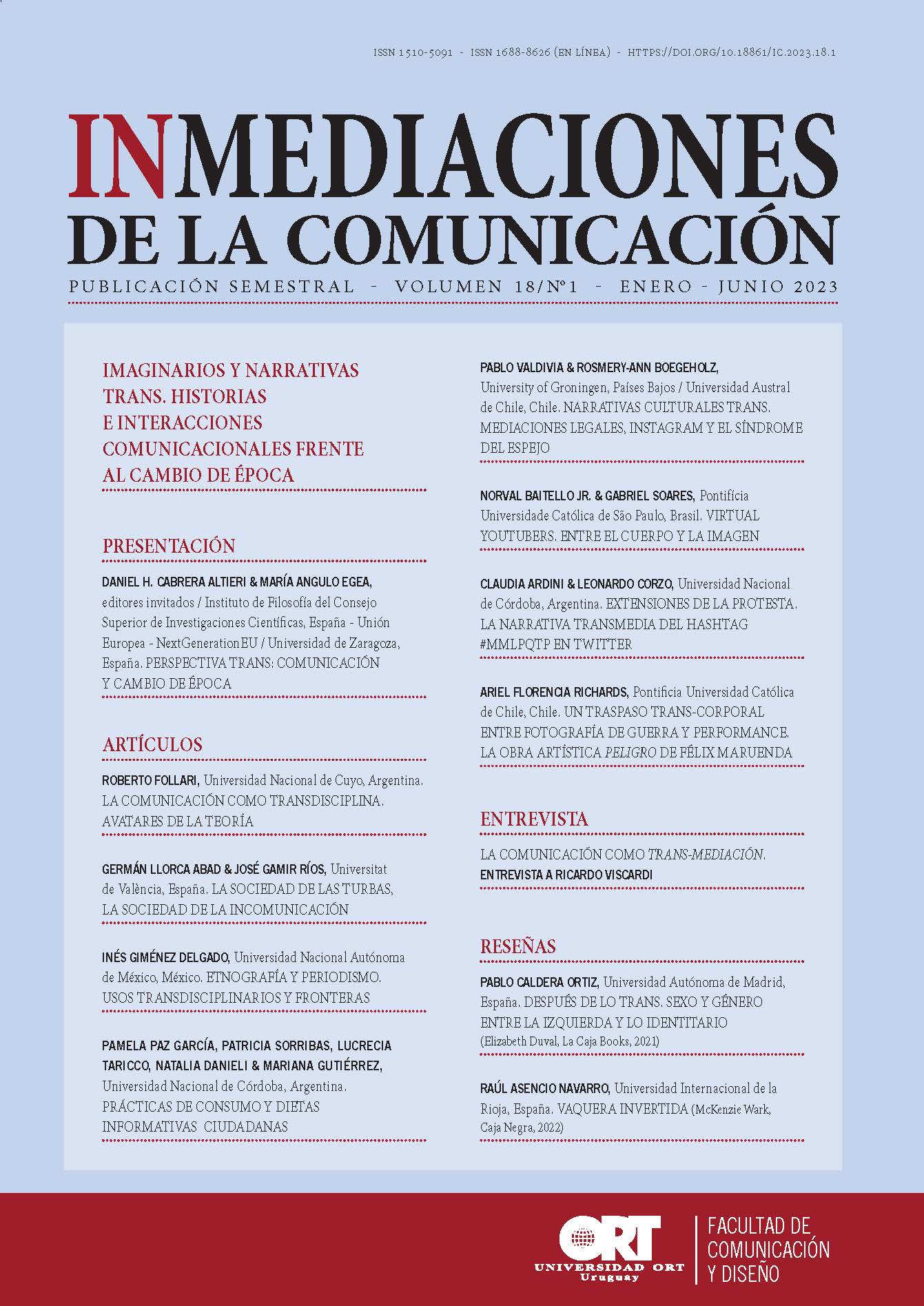A trans-corporeal transfer between war photography and performance
The artistic work Peligro by Félix Maruenda
DOI:
https://doi.org/10.18861/ic.2023.18.1.3383Keywords:
masculinity, Félix Maruenda, performance, photography, warAbstract
During the 1960s, there were media images –such as war photographs– which had an impact on the development of artistic practices in latitudes which were different from the ones in which the pictures had been taken. This article follows this hypothesis to analyze images of war events which portrayed wounded soldiers and men bending at their enemies, broken on the battlefield. Such images were printed in massive media and resounded with the work of artists who were exploring the representation of alternative masculinity, linked to the vulnerability that violence brings about. Particularly, the article will approach the work of the Chilean artist Félix Maruenda, who included the images of the Vietnam War in Peligro (1969), a collaborative work from the old Escuela de Bellas Artes, Universidad de Chile, in which he explored through dancing, sculpture, image and sound projection the transcorporal scope of battle horrors. The article states and analyses how Maruenda’s artistic imaginary, intuitive and experimental at the time, became influenced by images which captured, from an unfathomable physical distance, the corporal condition of other men. This is done by holding the hypothesis that the aforementioned allowed the development of a hybrid practice when discussing materiality, and a novel practice regarding the performative dimension.
Downloads
References
Audoin-Rouzeau, S. (2006). Matanzas. El cuerpo y la guerra En Corbin, A., Courtine, J. & Vigarello, G. (2006). Historia del cuerpo. Las mutaciones de la mirada. El siglo XX (pp. 275-305). Madrid: Taurus.
Audoin-Rouzeau, S. (2021). Stéphane Audoin-Rouzeau. Recuperado de: ehess.fr/fr/personne/stéphane-audoin-rouzeau
Burucúa, J. E. & Kwiatkowski, N. (2014). Como sucedieron estas cosas. Representar masacres y genocidios. Madrid: Katz Editores.
Corbin, A., Courtine, J. & Vigarello, G. (2006). Historia del cuerpo. Las mutaciones de la mirada. El siglo XX. Madrid: Taurus.
Friera, S. (2021). Contra el mandato de la masculinidad. Entrevista a Rita Segato. Goethe-Institut. Recuperado de: https://www.goethe.de/ins/ar/es/kul/mag/22141650.html
Jelín, E. (2002) Los trabajos de la memoria. Madrid: Siglo XXI.
Krauss, R. (2002). Lo fotográfico: por una teoría de los desplazamientos. Barcelona: Gustavo Gili.
Montes Rojas, L. (2020). Escultura y contingencia 1959-1973. Santiago: Departamento de Artes Visuales de la Universidad de Chile.
Reason, M. (2006). Documentation, Disappearance and the Representation of Live Performance. London: Palgrave Macmillan.
Segato, R. (2016). La guerra contra las mujeres. Madrid: Traficantes de sueños.
Taylor-Lind, A. (2021). Podcasts. Episode 7: The failing of war photography. Recuperado de: https://www.nationalgeographic.com/podcasts/overheard/article/episode-7-the-failing-war-photography






